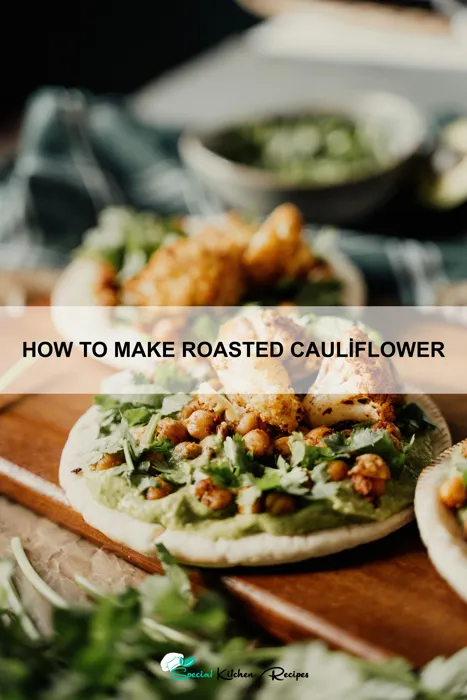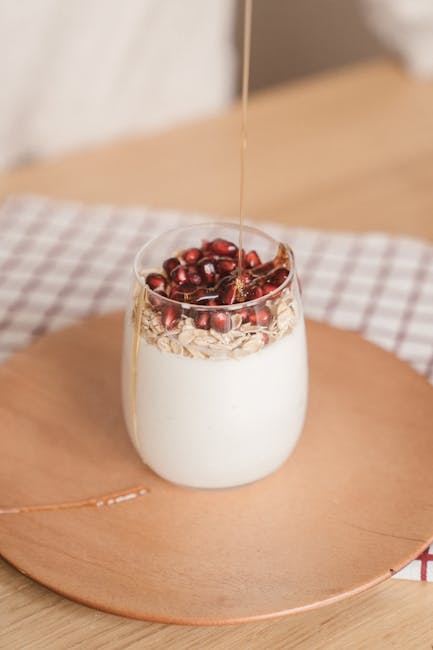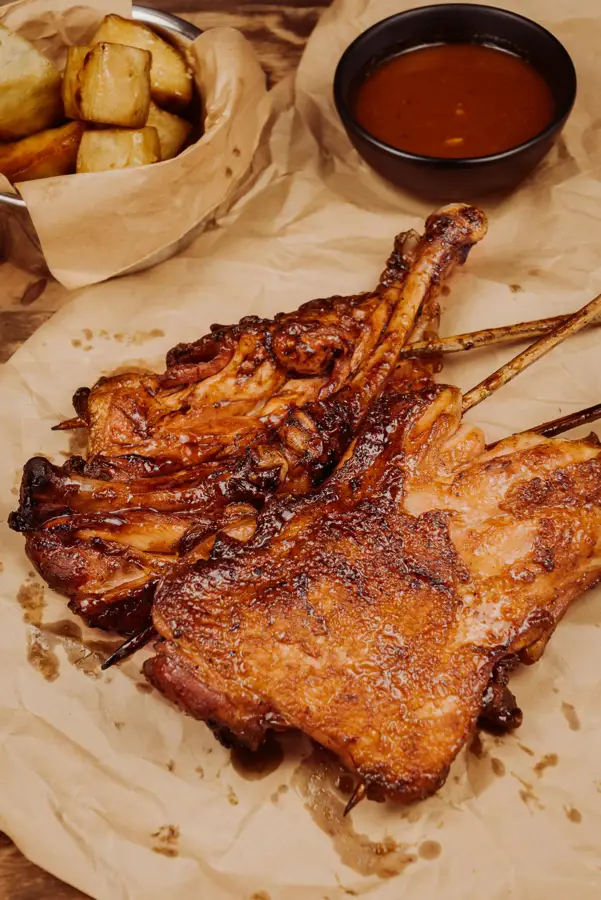Cauliflower, a cruciferous vegetable belonging to the Brassica oleracea species, boasts a surprisingly rich history far beyond its current status as a pantry staple. Its origins trace back to the Mediterranean region, likely stemming from wild cabbage varieties cultivated in the eastern Mediterranean as early as the 6th century BC. Ancient Greeks and Romans recognized its culinary potential, though its early forms differed significantly from the dense, white heads we know today. Interestingly, the cauliflower we enjoy today is a result of centuries of selective breeding, with its development significantly accelerated during the 16th and 17th centuries in Italy and France.
While initially a delicacy enjoyed by the upper classes, cauliflower gradually gained popularity throughout Europe and eventually made its way to the Americas. Its creamy texture and mild flavor, easily adaptable to various cooking methods, contributed to its widespread acceptance. Today, cauliflower is a global culinary commodity, with global production exceeding millions of tons annually. Specific production statistics vary by year and region, but it consistently ranks among the top-produced vegetables worldwide, demonstrating its enduring appeal across cultures and cuisines.
Cauliflower holds significant cultural importance in various parts of the world. In many Mediterranean countries, it remains a cornerstone of traditional dishes, featuring prominently in stews, side dishes, and even as a base for flavorful sauces. Its versatility is a key factor in its widespread use – from simple roasted preparations like the one we will explore, to complex curries and intricate vegetarian dishes. Furthermore, cauliflower’s nutritional value, packed with vitamins C and K, fiber, and antioxidants, adds to its appeal in modern health-conscious societies. This recipe for roasted cauliflower aims to highlight its natural deliciousness with minimal interference, showcasing the vegetable’s inherent versatility and appeal.
Ingredients and Measurements
This recipe yields approximately 4 servings of deliciously roasted cauliflower. The quantities can be easily adjusted to suit your needs; simply multiply or divide the ingredient amounts proportionally.
Cauliflower: 1 large head of cauliflower (approximately 2 pounds). Choose a head that is firm, dense, and free from blemishes. Smaller florets roast more evenly, so breaking down a large head is crucial for optimal results. Aim for florets that are roughly the same size for consistent cooking.
Olive Oil: 1/4 cup (60ml) extra virgin olive oil. Using a high-quality olive oil will significantly enhance the flavor of your roasted cauliflower. Don’t be afraid to use a good amount; the oil helps the cauliflower to crisp up beautifully. You can substitute with another high-heat oil like avocado oil if preferred.
Spices: The spice blend is entirely customizable to your taste! Here’s a suggestion for a flavorful base:
- 1 teaspoon garlic powder
- 1 teaspoon onion powder
- 1 teaspoon paprika (smoked paprika adds a deeper, smokier flavor)
- 1/2 teaspoon dried oregano
- 1/2 teaspoon dried thyme
- 1/2 teaspoon salt
- 1/4 teaspoon black pepper
Feel free to experiment! Consider adding cumin, chili powder, or other herbs and spices to create your signature roasted cauliflower blend. Remember to adjust the salt according to your preference after tasting before serving.
Optional additions: To add extra depth of flavor or texture, consider these additions:
- 1 tablespoon lemon juice (added after roasting for brightness)
- 1/4 cup chopped fresh parsley or cilantro (added as a garnish)
- 1/4 cup grated Parmesan cheese (added after roasting)
Note: If using fresh herbs, add them towards the end of the roasting time to prevent them from burning. For a spicier kick, add a pinch of red pepper flakes to the spice blend. Always taste and adjust seasonings as needed throughout the cooking process.
Equipment Needed
Roasting cauliflower successfully hinges on having the right tools. While you can improvise, investing in a few key pieces of equipment will significantly improve your results and make the process easier. Let’s break down exactly what you’ll need.
First and foremost, you’ll need a large baking sheet. Aim for one that measures at least 18 x 13 inches (45 x 33 cm). A smaller sheet will overcrowd the cauliflower florets, leading to steaming instead of roasting, resulting in a soggy rather than crispy texture. Non-stick baking sheets are particularly convenient for easier cleanup, although a standard aluminum baking sheet works perfectly well.
Next, you’ll need a sharp knife for cutting the cauliflower. A chef’s knife, approximately 8 inches long, is ideal for efficiently chopping the head into bite-sized florets. A dull knife will make cutting difficult and potentially dangerous, so ensure your knife is sharp before you begin. You might also find a smaller paring knife useful for trimming the stem.
For even roasting and crispness, a large bowl is essential. This is where you’ll toss the cauliflower florets with the oil and seasoning. A bowl that’s large enough to comfortably hold all the florets without overcrowding is key. A 5-quart or larger bowl is recommended for a standard head of cauliflower.
Optional but highly recommended is a wire rack that fits inside your baking sheet. Placing the cauliflower florets on a wire rack elevates them, ensuring even air circulation around each floret and resulting in significantly crispier edges. If you don’t have a wire rack, you can spread the florets in a single layer on the baking sheet, but be mindful of overcrowding.
Finally, you’ll need measuring spoons and cups for accurately measuring the oil and spices. Precise measurements are crucial for achieving the desired flavor and texture. Using a kitchen scale for weighing the cauliflower can also contribute to consistency if you’re making this recipe frequently.
In summary: A large baking sheet, a sharp knife, a large bowl, (optional but recommended) a wire rack, and measuring tools are the essential equipment for perfectly roasted cauliflower.
Preparation Phase: Washing and Chopping
Before you begin roasting your cauliflower, proper washing and chopping are crucial for achieving optimal results. This phase sets the stage for even cooking and maximum flavor development. We’ll be working with one medium-sized head of cauliflower, approximately 1.5 to 2 pounds.
First, thoroughly wash the cauliflower under cold running water. Remove any loose leaves or debris. Pay close attention to the crevices between the florets, as dirt and insects can sometimes hide there. A gentle scrubbing with your hands or a vegetable brush can be helpful. Don’t soak the cauliflower, as this can lead to excess moisture and affect the roasting process.
Once clean, it’s time to chop the cauliflower. The size of your florets will influence the cooking time and texture. For a tender and evenly roasted cauliflower, aim for roughly uniform florets, about 1 to 1.5 inches in size. Smaller florets will cook faster, while larger ones may require extra time in the oven. Consistency is key to preventing some pieces from burning while others remain undercooked.
To begin chopping, first remove the tough core from the bottom of the cauliflower. You can use a sharp knife to cut away the base, ensuring a flat surface for stability. Then, cut the cauliflower into quarters or sixths, depending on its size. From there, break each section into smaller florets. Avoid overly small pieces as they may become mushy during roasting. If you find any particularly large florets, feel free to cut them in half to maintain uniformity.
Professional Tip: For a more visually appealing dish, try to maintain a consistent size and shape for your florets as much as possible. This doesn’t need to be perfect; slight variations are fine. However, aiming for consistency will lead to a more even roast.
Once all the florets are chopped to your liking, you can proceed to the next step. Remember to discard any damaged or discolored florets. These will not only look bad in your finished dish, but they can also negatively affect the overall taste.
Pre-roasting Preparations: Toss with Oil and Seasonings
Before your cauliflower hits the oven, proper preparation is key to achieving perfectly roasted florets with a delightful crunch and rich flavor. This stage involves tossing the cauliflower with oil and seasonings, a seemingly simple step that significantly impacts the final result.
Begin by preheating your oven to 400°F (200°C). This ensures that your cauliflower roasts evenly and doesn’t steam, resulting in a less desirable texture. While the oven heats, prepare your cauliflower. We’ll assume you’re working with approximately 1 large head of cauliflower, roughly 2 pounds.
Choosing the right oil is crucial. High-heat oils like avocado oil or olive oil are ideal. They possess a high smoke point, preventing burning and imparting a pleasant flavor. Use about 2-3 tablespoons of your chosen oil. Too little oil will result in dry cauliflower, while too much will lead to soggy florets. The sweet spot is finding a light, even coating on each piece.
Now, for the seasonings! The possibilities are endless, but a simple and effective starting point is a combination of salt and pepper. Generously season with 1 teaspoon of kosher salt and ½ teaspoon of freshly ground black pepper. These basics highlight the cauliflower’s natural flavor. Feel free to experiment! Garlic powder (1 teaspoon), paprika (½ teaspoon), or even a pinch of cayenne pepper for a kick can elevate the flavor profile.
The tossing technique is important. Use a large bowl to ensure all pieces are coated evenly. Gently toss the cauliflower florets with the oil and seasonings, making sure every piece is well-distributed. Avoid over-mixing, as this can bruise the florets. If you’re using herbs, add them at this stage. Fresh rosemary or thyme sprigs work beautifully, adding an aromatic dimension to your roasted cauliflower.
Pro-Tip: For extra crispy cauliflower, consider par-boiling the florets for 5 minutes before tossing them with oil and seasonings. This helps to reduce moisture content, resulting in a crispier exterior during roasting. However, this step is optional and depends on your preference for texture.
Once evenly coated, your cauliflower is ready for roasting! Spread it in a single layer on a baking sheet and pop it into the preheated oven. Remember to check for doneness after about 20-25 minutes, adjusting the cooking time as needed to achieve your desired level of crispness and browning.
Cooking Techniques: Roasting in the Oven
Roasting cauliflower in the oven brings out its natural sweetness and creates a wonderfully caramelized exterior. This technique requires minimal hands-on time, allowing the oven to do most of the work. To achieve perfectly roasted cauliflower, follow these steps and tips.
Preparation is key. Begin by preheating your oven to 400°F (200°C). This ensures the cauliflower cooks evenly and develops a crispy crust. A high-heat roast is essential for achieving the desired texture.
Next, prepare your cauliflower. A medium-sized head of cauliflower (approximately 2 pounds) works well for this recipe. Remove any damaged leaves and trim the stem, leaving about ½ inch attached for stability. Cut the cauliflower into bite-sized florets, aiming for roughly 1-inch pieces. Uniformly sized florets ensure even cooking; larger pieces will be undercooked while smaller pieces may burn.
Seasoning is crucial for enhancing the flavor of the roasted cauliflower. In a large bowl, toss the cauliflower florets with 2 tablespoons of olive oil. This helps to coat the florets evenly and prevents sticking. Then, season generously with salt and freshly ground black pepper. About 1 teaspoon of each is a good starting point, but adjust to your taste. Consider adding other spices for extra flavor – ½ teaspoon of garlic powder, paprika, or cumin work well.
Spread the seasoned cauliflower florets in a single layer on a large baking sheet. Avoid overcrowding the pan, as this will lead to steaming rather than roasting, resulting in soggy cauliflower. Use two baking sheets if necessary. Ensure the florets are not touching each other to allow for proper air circulation.
Roast the cauliflower for 25-30 minutes, or until it is tender and golden brown. Toss the florets halfway through cooking for even browning and crisping. Check for doneness by piercing a floret with a fork; it should be easily pierced but still have a slight bite.
Once cooked, remove the baking sheet from the oven and let the cauliflower cool slightly before serving. You can adjust the cooking time depending on your oven and desired level of crispiness. Over-roasting can lead to burning, so keep a close eye on it during the last few minutes.
Enjoy your perfectly roasted cauliflower! It’s delicious as a side dish, or as part of a larger meal.
Checking for Doneness
Knowing when your roasted cauliflower is perfectly done is crucial to achieving that delicious balance of tender interior and crispy exterior. Overcooked cauliflower becomes mushy and loses its vibrant flavor, while undercooked cauliflower remains tough and unpleasant. There are several ways to check for doneness, and using a combination of methods is recommended for best results.
Visual Inspection: Begin by observing the cauliflower’s color. The florets should be a deep golden brown, almost caramelized in appearance. Avoid pale florets, as this indicates undercooking. The edges should appear slightly darkened and slightly wrinkled, signifying caramelization and tenderization. However, don’t let them burn to a dark brown or black; that signals overcooking.
Fork Test: This is the most reliable method. Gently pierce a floret in the thickest part of the head with a fork. It should pierce easily, offering minimal resistance. If the fork meets resistance, it needs more time in the oven. If it goes through too easily and the floret feels mushy, it’s overcooked.
Temperature Check (Optional): While not strictly necessary for cauliflower, a food thermometer can provide precise measurements. The internal temperature of the thickest part of a roasted cauliflower floret should reach approximately 200-210°F (93-99°C). This ensures even cooking throughout. However, relying solely on temperature might lead to overcooking, as the florets might continue to cook slightly after removal from the oven.
Timing is Key: While oven temperatures and cauliflower size vary, a general roasting time for a medium-sized head of cauliflower (approximately 1.5-2 lbs) is around 30-40 minutes at 400°F (200°C). However, always prioritize the visual and fork tests over the timer. Smaller florets will cook faster, while larger ones will require more time. It’s always better to err on the side of caution and check for doneness a few minutes before the estimated time.
Roasting Time Adjustments: If you’re roasting cauliflower with other vegetables, adjust your cooking time accordingly. Consider that some vegetables, like carrots or potatoes, will require a longer roasting time than cauliflower. Roast the vegetables with similar cooking times together to ensure even doneness.
Remember: Even after removing the cauliflower from the oven, it will continue to cook slightly due to residual heat. Remove it from the oven when it’s *almost* perfectly done to prevent overcooking.
Recommendations
For the best results when roasting cauliflower, ensure you use a head of cauliflower that is firm and free of blemishes. Smaller florets will roast more evenly and quickly than larger ones. Preheating your oven to the correct temperature is crucial for achieving a crispy exterior and tender interior. Don’t overcrowd the baking sheet; this will hinder even roasting and result in steaming rather than roasting. Leaving some space between the florets allows for proper air circulation.
Once roasted, your cauliflower will be incredibly versatile. Serve it as a delicious side dish alongside grilled meats, such as chicken or steak, or alongside roasted root vegetables for a hearty autumnal meal. It also pairs beautifully with fish, particularly salmon or cod. It can be a great addition to grain bowls, providing a healthy and flavorful component. Consider adding it to salads for a textural contrast and boost of nutrients.
Storage is key to maintaining the quality of your roasted cauliflower. Allow it to cool completely before storing. Store leftovers in an airtight container in the refrigerator for up to 3-4 days. You can also freeze roasted cauliflower for longer storage. Allow it to cool completely, then place it in a freezer-safe bag or container. Frozen cauliflower can be stored for up to 3 months. Remember to thaw it completely before reheating.
Nutritional Information (per 1 cup of roasted cauliflower): Calories: Approximately 55-60; Protein: 2-3g; Fat: 1-2g; Carbohydrates: 10-12g; Fiber: 3-4g. Note: Nutritional information can vary depending on the size of the cauliflower head, the amount of added oil or seasoning, and cooking methods.
Complementary dishes to consider: Roasted cauliflower is exceptionally delicious with a sprinkle of fresh herbs like parsley, rosemary, or thyme. A squeeze of lemon juice brightens the flavor profile beautifully. Consider adding toasted nuts, such as almonds or pecans, for added texture and flavor. A drizzle of tahini or a dollop of yogurt can also enhance the creamy texture and richness of the roasted cauliflower. Experiment with different spices; cumin, paprika, and garlic powder all work wonderfully.





